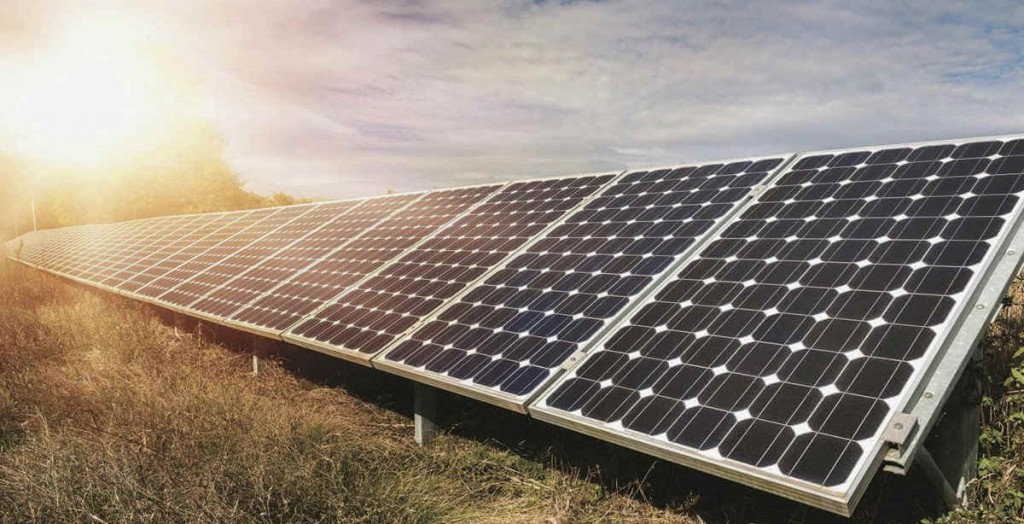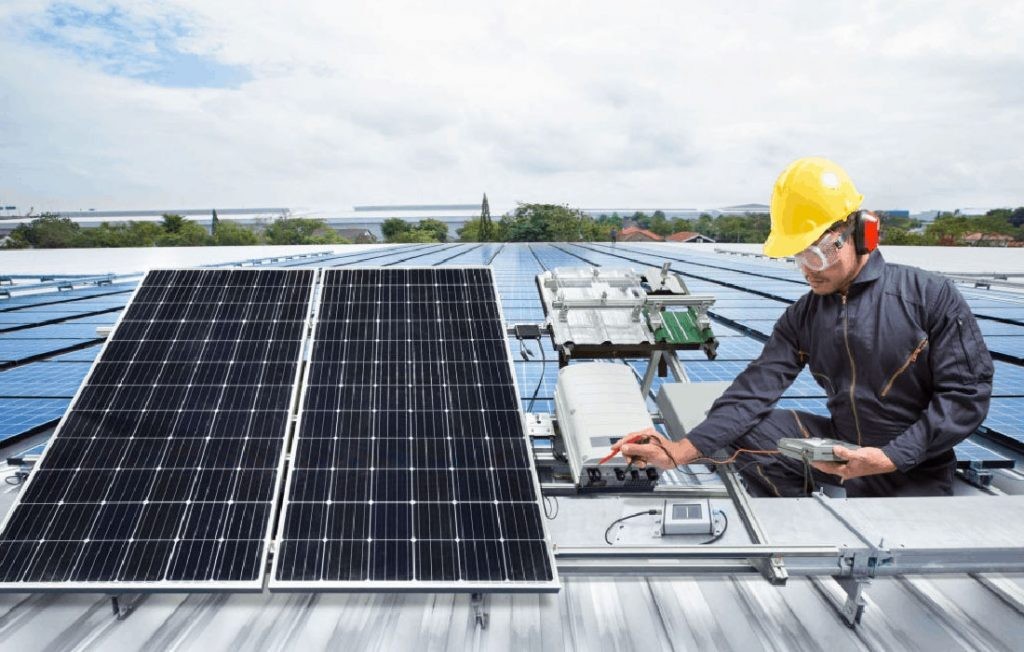Explanation of the System:
With cells in a photovoltaic module, radiation is directly converted into electricity. The light falls onto the cells, which consist of layers of semiconducting material. It creates an electric field across the layers, causing electricity to flow. The amount of electrical power each cell generates depends on the intensity of the sunlight.

The whole SPV system consists of multiple components, which make it possible to use electrical power. The different parts and how they are connected to each other can be seen in Figure 1. The blocking diode works as a string protection. It does not allow reverse current flow. The DC switches are used to connect the PV module to other components of the system. The surge protection device protects the inverter from lightning. The inverter converts DC power into AC power. The cable ensures the flow of electricity from input to output. [2]

Dimension of the system:
- 10 000 Panels
- 15 000 m²
- 3000 kW
Embodied Energy and Emissions:
A study by Alsema et al. [4] estimates that the embodied energy of a crystalline silicon solar PV system ranges from 4.2 to 8.2 MJ/m2, depending on the location and the scale of production. They also estimate it generates approximately 80-130 kg CO2e/m2, which includes the emissions from all stages of the production process, including raw materials’ extraction, production, transportation, and installation. The study also found that sulphur dioxide (SO2) and nitrogen oxides (NOx) emissions are minimal, and typically less than 1% of the total emissions.
We, therefore, assume in this project the following values for all stages of the production process:
- 1 500 t of CO2
- 15 t of SO2
- 15 t of NOx
- 90 000 MJ of Energy
Maintenance:
- Cleaning: Dust, dirt, and other debris can accumulate on the solar panels, reducing their efficiency. It is recommended to clean the panels at least twice a year, or more often if they are located in a particularly dirty or dusty area.
- Inspection: A visual inspection of the system should be conducted on a regular basis to check for any damage or signs of wear and tear. This includes checking for loose connections, cracked or broken panels, or any other issues that might affect the performance of the system.
- Monitoring: Most solar PV systems come with a monitoring system that provides real-time data on the performance of the system. It is important to regularly check the monitoring system to ensure that the system is operating correctly and to identify any issues that may need attention.
- Battery maintenance: If the system includes a battery bank, it is essential to check the state of charge and perform regular maintenance, such as checking the water level in the batteries and ensuring that they are properly charged.
- Professional maintenance: It is recommended to have a professional maintenance check every 2–3 years to ensure that the system is operating as intended. This will include a full check of the electrical connections, a check of the power output, and a check of the condition of the solar panels.

Parts which need to be replaced:
- Inverters: Inverters are responsible for converting the DC electricity produced by the solar panels into AC electricity that can be used in the home or sent back to the grid. Inverters have a lifespan of around 10–15 years, and they may need to be replaced if they fail or if their efficiency begins to degrade.
- Batteries: If the system includes a battery bank, the batteries may need to be replaced if they lose capacity or if they fail. The lifespan of batteries can vary depending on the type of battery and how well they are maintained, but it is typically around 5–15 years.
- Wiring and connections: The wiring and connections in a solar PV system may need to be replaced if they become damaged or if they become loose over time. It’s important to ensure that the wiring and connections are in good condition in order to ensure the safe and efficient operation of the system.
References:
[1] https://minusco2.in/solarinsider/types-of-solar-pv-systems/
[5] https://solarvest.my/2020/04/13/how-solar-operation-and-maintenance-can-maintain-system-performance/